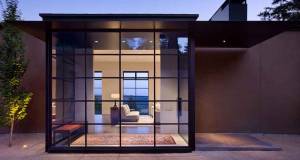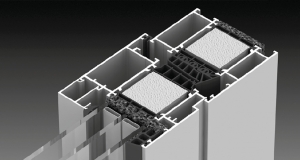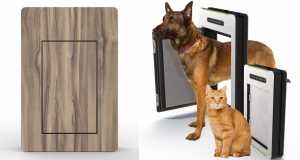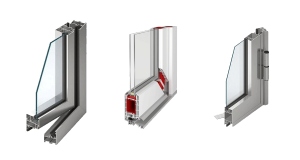 Geraldine Murphy
Geraldine Murphy
- Conservation
- Posted
Dublin Civic Trust

A cursory browse through Dublin Civic Trusts website and one is all too quickly reminded of the constant threat to our Architectural heritage.
As we endeavour to conserve and protect that which remains it’s important to remember the history involved in the creation of our much valued past and remind ourselves of the skills and crafts employed over the centuries. A particularly notable area is Joinery.
The term refers to the non-structural elements of a building, such as doors, architraves and window frames and the quality and variety of such pieces found in Ireland is second to none. The craft involved in the area has been subject to the same variation in style and detail as that of the many periods of Dublin’s rich plasterwork and it’s a unique art in its own right.
Here, Geraldine of the Dublin Civic Trust provides us with a historical background:
17th and early 18th Century
Rooms of this period generally had timber panelling to the walls, and sometimes this incorporated timber cornices. The earliest rooms used flat panels with bolection mouldings.
Mid 18th Century
The use of timber panelling in walls diminished during the middle of the 18th century, and when it was used it was restricted to the dado area between the chair or dado rail and skirting boards. Joinery of this period is characterised by the use of chunky ovolo mouldings with prominent skirting boards and dado rails. Lugged architraves were commonly used for doors and windows, and window architraves were usually set on a heavy pedestal. Doors of the period typically had six panels with the top and bottom panels running the full width of the door. After the 1770s, the use of raised and fielded panels on doors and shutters gave way to flat panels.
Timber Species
The majority of interior joinery was typically made using softwoods such as fir or pine imported from the Baltic countries or North America. Oak was occasionally used during the late 17th and early 18th centuries in the grandest houses, and some early oak staircases still survive in Dublin.
Late 18th Century
The neoclassical movement saw a refinement of detail in joinery with the use of delicate mouldings and a new range of motifs.
Early 19th Century
During this period, the increased taste for, and availability of, wallpaper led to the dado rail falling out of fashion. During the first decade of the century, the change in fashion from festooned blinds to draped and swagged curtains led to the use of shutters splayed at an angle.
Mid and Late 19th Century
By the middle of the 19th century, a fairly standard form of detailing for joinery emerged and continued in use up to the early 20th century. Mouldings tended to have a heavy profile, with doors having four panels with the upper panels being taller than the lower. Timber picture rails came to be used in the late 19th century.
Early 20th Century
The Arts and Crafts and Art Nouveau styles, despite their influence on furniture and other decorative elements such as glass and tiling, had little effect in changing the much standardised detailing of joinery.
Embellished Joinery
In the grander houses it was common practise to embellish joinery with carving or compo. Carving was the most common during the mid 18th century when the rococo style saw a taste for high relief ornaments.
To say the workmanship involved in creating pieces such as those mentioned above is impressive is more than an understatement. As you’ll see on subsequent pages more and more companies are specialising in salvaging and restoring our many great buildings. While the identities of the original designers of these pieces may have been lost in time, The Dublin Civic Trust can only be commended for working with such companies to preserve one of the more unique and distinctive facets of our national heritage.
Course: Repair and Conservation of Historic Buildings (27/02/2003-27/03/2003). Thursdays only from 9:30-5:30 at the Dublin Civic Trust HQ (4 Castle St, Dublin 2)
Fee: €684
Contact: Eimear
Tel: 01 4756911
Email: This email address is being protected from spambots. You need JavaScript enabled to view it.




